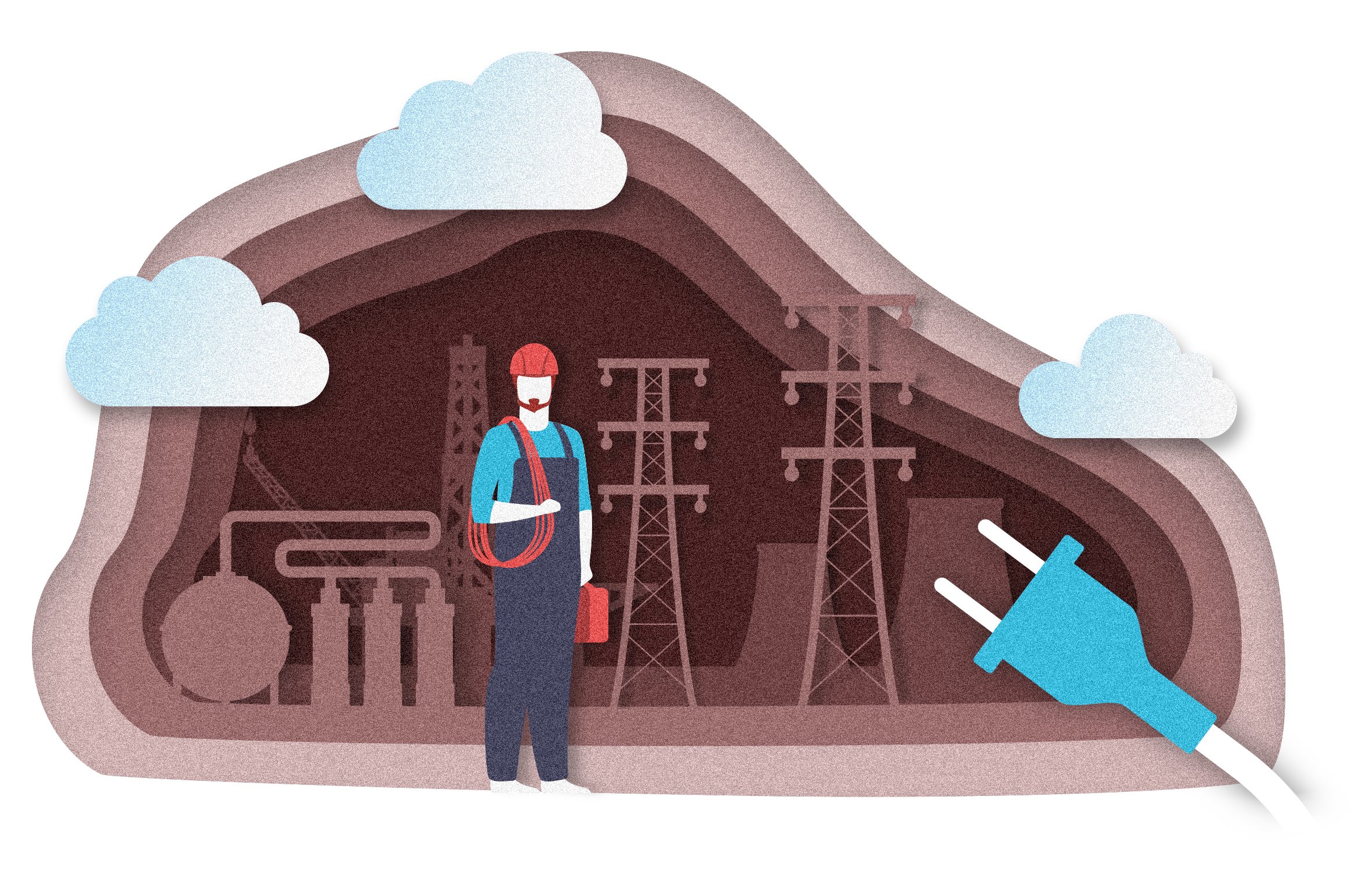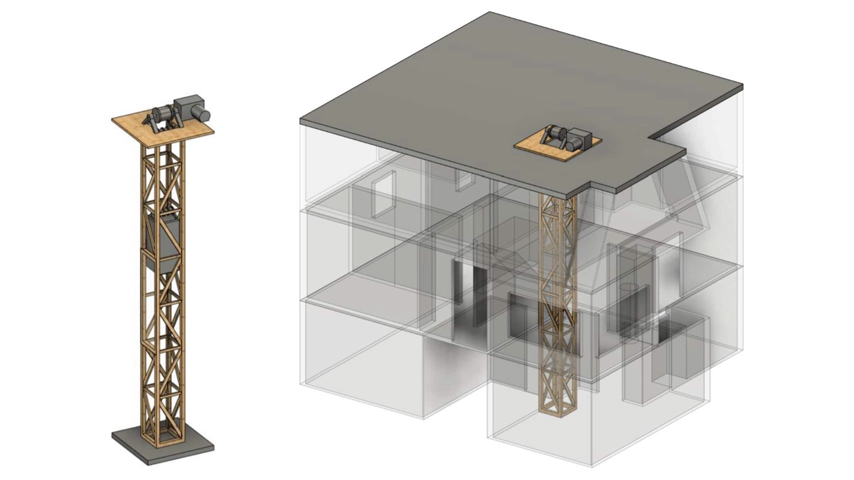Energy Blog: Finance is the Invisible Hand Driving Energy Policy
Energy Blog: Finance is the Invisible Hand Driving Energy Policy


The finance and insurance industries have a major say in how we address mobility and climate issues.
Engineers like me typically believe we have the answer to everything, and that better technology is the path to a better future. But look at the major revolutions in energy and mobility, and you’ll see another force playing a bigger role than most of us realize: finance.
While the Model T was a breakthrough of production engineering, Henry Ford wanted customers to save up the full purchase price and pay with cash. The car industry as we know it was made possible thanks to GMAC, GM’s financing arm that just over a century ago opened up individual auto ownership via car loans. And automobile insurance made sure that owners of these expensive and dangerous machines wouldn’t be bankrupted in case of an accident.
Finance has shaped the development of the capital-intensive oil industry, too. Wildcatters hunted for money just as aggressively as they hunted for oil. Without the money, they could not afford to pay for their workers or expensive equipment to drill prospective wells. Recently, easy access to cheap capital after the global financial crisis of 2008 helped unleash the shale boom.
Recommended for You: The Oil Industry is Part of the Solution
In the power industry, the cost of money is a major factor in what kinds of power plants or other infrastructure can be built. Meanwhile, property-assessed clean energy programs speed the adoption of rooftop solar panels by shifting costs to homeowners’ property tax bills rather than expensive bank loans.
In addition to finance, I believe the insurance industry will shape mobility and energy policy in the coming decades as never before.
For instance, the insurance industry likely will drive the adoption of electric and self-driving vehicles. Recent peer-reviewed research in the journal Transport Policy concluded that insurance premiums for electric vehicles are 35 percent cheaper than for equivalent gasoline models. What’s more, because robot drivers will be safer than distractible humans, the insurance for an autonomously driven car could be cut by nearly half. This differential will push ordinary car owners to buy clean and safe autonomous electric vehicles, leaving what we now think of as “conventional” automobiles as the playthings of the rich.
Actuaries could drive climate action, though indirectly.
You May Also Like: Our Energy and Climate Policies are Counterproductive
Parts of California are already uninsurable because of fire risks. Losses due to wildfire damage have reached to tens of billions of dollars per year, forcing insurers to raise rates to cost-prohibitive levels—or to cancel coverage altogether. This, in turn, impacts property values.
It’s not just wildfires: floods also loom large. Miami is both sprawling and low-lying, meaning that even throwing up a short wall against storms and sea level rise will cost billions. New York City is considering a project to build a shoreline barrier, but that 25-year effort could cost more than $100 billion to implement.
The alternative—waiting for the storm to hit—cost Houston nearly as much in cleanup after 2017’s Hurricane Harvey. Most of the damage wasn’t insured, and in the face of rising seas and more severe storms, it is likely insurance companies will increase premiums or stop providing coverage in low coastal areas.
As with electric cars, insurance costs and availability will start to force technology and infrastructure choices. The high up-front costs of burying power lines will be justified by lower premiums for utilities and for at-risk property in their service areas, since they will no longer be threatened by fires sparked from overhead lines. More broadly, insurance costs will push people to abandon flood-plains or coastal cities and encourage infrastructure builders to prepare for a hotter world by protecting properties and making their systems safer.
Editor's Pick: Fly More, Not Less
In other words, while policymakers and individuals roundly ignore technology and climate experts and plan on business as usual, the apolitical and unemotional insurance industry—ignoring slogans and considering only the numbers—will force them to eventually take climate change seriously. Compared to the costs of sea- walls, infrastructure hardening, and a potential retreat from the coasts, the price tag for decarbonizing the energy sector seems like a bargain.
MICHAEL E. WEBBER is the Josey Centennial Professor of Energy Resources at the University of Texas in Austin and chief science and technology officer at ENGIE, a global energy company headquartered in Paris. His television series, Power Trip: The Story of Energy, is available on Apple TV, Amazon Prime Video, and local PBS stations.
While the Model T was a breakthrough of production engineering, Henry Ford wanted customers to save up the full purchase price and pay with cash. The car industry as we know it was made possible thanks to GMAC, GM’s financing arm that just over a century ago opened up individual auto ownership via car loans. And automobile insurance made sure that owners of these expensive and dangerous machines wouldn’t be bankrupted in case of an accident.
Finance has shaped the development of the capital-intensive oil industry, too. Wildcatters hunted for money just as aggressively as they hunted for oil. Without the money, they could not afford to pay for their workers or expensive equipment to drill prospective wells. Recently, easy access to cheap capital after the global financial crisis of 2008 helped unleash the shale boom.
Recommended for You: The Oil Industry is Part of the Solution
In the power industry, the cost of money is a major factor in what kinds of power plants or other infrastructure can be built. Meanwhile, property-assessed clean energy programs speed the adoption of rooftop solar panels by shifting costs to homeowners’ property tax bills rather than expensive bank loans.
In addition to finance, I believe the insurance industry will shape mobility and energy policy in the coming decades as never before.
For instance, the insurance industry likely will drive the adoption of electric and self-driving vehicles. Recent peer-reviewed research in the journal Transport Policy concluded that insurance premiums for electric vehicles are 35 percent cheaper than for equivalent gasoline models. What’s more, because robot drivers will be safer than distractible humans, the insurance for an autonomously driven car could be cut by nearly half. This differential will push ordinary car owners to buy clean and safe autonomous electric vehicles, leaving what we now think of as “conventional” automobiles as the playthings of the rich.
Actuaries could drive climate action, though indirectly.
You May Also Like: Our Energy and Climate Policies are Counterproductive
Parts of California are already uninsurable because of fire risks. Losses due to wildfire damage have reached to tens of billions of dollars per year, forcing insurers to raise rates to cost-prohibitive levels—or to cancel coverage altogether. This, in turn, impacts property values.
It’s not just wildfires: floods also loom large. Miami is both sprawling and low-lying, meaning that even throwing up a short wall against storms and sea level rise will cost billions. New York City is considering a project to build a shoreline barrier, but that 25-year effort could cost more than $100 billion to implement.
The alternative—waiting for the storm to hit—cost Houston nearly as much in cleanup after 2017’s Hurricane Harvey. Most of the damage wasn’t insured, and in the face of rising seas and more severe storms, it is likely insurance companies will increase premiums or stop providing coverage in low coastal areas.
As with electric cars, insurance costs and availability will start to force technology and infrastructure choices. The high up-front costs of burying power lines will be justified by lower premiums for utilities and for at-risk property in their service areas, since they will no longer be threatened by fires sparked from overhead lines. More broadly, insurance costs will push people to abandon flood-plains or coastal cities and encourage infrastructure builders to prepare for a hotter world by protecting properties and making their systems safer.
Editor's Pick: Fly More, Not Less
In other words, while policymakers and individuals roundly ignore technology and climate experts and plan on business as usual, the apolitical and unemotional insurance industry—ignoring slogans and considering only the numbers—will force them to eventually take climate change seriously. Compared to the costs of sea- walls, infrastructure hardening, and a potential retreat from the coasts, the price tag for decarbonizing the energy sector seems like a bargain.
MICHAEL E. WEBBER is the Josey Centennial Professor of Energy Resources at the University of Texas in Austin and chief science and technology officer at ENGIE, a global energy company headquartered in Paris. His television series, Power Trip: The Story of Energy, is available on Apple TV, Amazon Prime Video, and local PBS stations.



